RETINA READ RISK Newsletter – Focus Group in Paris

A reminder on the Retina Read Risk project!
A few months ago, we told you about the latest updates of the Retina Read Risk project, which aims to provide a solution for physicians who monitor diabetic patients, with a device that enables them to better assess the risk of developing an ophthalmic disease known as diabetic retinopathy. The tool for early detection of retinopathy, which is simpler, faster, more ergonomic and less costly than existing models and is based on Artificial Intelligence (AI), was developed in the second half of 2023 by the Institut d’Investigació Sanitària Pere Virgili (IISPV), placed in the province of Tarragona (Catalonia, Spain). One of the consortium partners, E-Seniors, supports Parisian seniors aged 55 and over in their use of new technologies to fight isolation, enrich their leisure time and improve their health. As part of the project, the association brings its expertise and links with this particular group, providing solutions tailored to the needs of senior citizens.
The project enables E-Seniors to reinforce its commitment to innovation for healthy living and active ageing, while acting as a bridge between the two parties. The organization took the opportunity of the finalisation of the first established solution (using Vistaview tools as a compound of the solution and that has been replaced now) to present it in Paris to one of the project’s target audiences: the over-50s, an audience at risk of blindness because of the lack of early detection of the disease.
This device presentation phase is justified by the need to:
1) Present the risks of diabetic retinopathy to a public not necessarily
This device presentation phase is justified by the need to:
1) Present the risks of diabetic retinopathy to a public who may not be aware of the dangers of this disease.
2) To obtain some feedback from the main population that undergoes the screening about the ergonomics, the ease of use and their understanding of the solution.
Retina Read Risk device presentation sessions in Paris
Session management
Two E-Seniors project managers visited the Hospital Universitari Sant Joan de Reus (in Catalonia, Spain) at the end of 2023. The purpose of the trip was not only to pick up several devices, but also to meet the project’s coordinating team in person. The meeting was an opportunity to learn about the AI program used to ensure the fastest and earliest possible detection, and to understand and learn how to handle the device. It was important to understand how it had been designed, according to what criteria and in response to what needs, and to learn how to handle it properly.
Indeed, the challenge is to have the opportunity to present the solution to part of the target audience, in order to gather their opinion and assess its usefulness and ergonomics. It can be noted that E-Seniors is involved in the project to enable contact with seniors over 65 who have not been diagnosed with diabetic retinopathy. This is a group that the association has tried to reach specifically, aimed at adults roughly in this age bracket. While the aim of these sessions is to present and evaluate the device, they also serve to inform seniors about diabetic retinopathy, its rates and risks, and the importance of detecting and preventing it as early as possible.
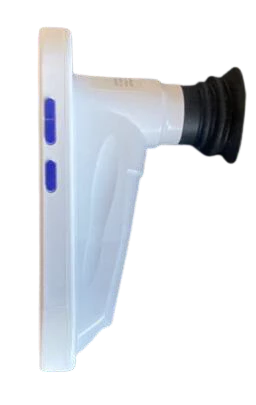
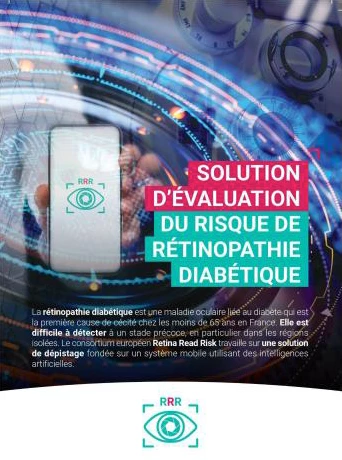
Four Focus Groups in Paris
E-Seniors recently organised four presentation sessions, which we also call Focus Groups. Two sessions took place in December 2023 and two more in January 2024. A total of 113 people were reached. The majority were over 55 years of age.
Setting up events in Paris is part of E-Seniors’ remit in the context of European and other projects. Thanks to an in-house newsletter with a readership of almost 3,000, and contacts with a number of other senior citizens’ associations and neighbourhood town halls, E-Seniors was able to publicize its activities using a flyer prepared by the consortium and distributed in both paper and digital formats.
As the illustrations reveal, a presentation part helped senior citizens to understand the topic of retinopathy, its causes and consequences, as well as how to prevent it as early as possible (through the need to perform an eye fundus assessment regularly and early enough). Informing these specific populations is a preventive measure. The session revealed a lack of knowledge among this elderly population about the risks. The access to ophthalmological services can be limited due to the high cost of consultations and examinations, geographical accessibility, anxiety or fear felt by some patients, communication difficulties, and mobility problems, which can interfere with their ability to get to their appointments.
Secondly, the RetinaReadRisk project and its solution were presented to the seniors, as well as how it works. Feedback from senior citizens at the RetinaReadRisk presentation sessions was essential in assessing the device’s impact. Among the comments received, many participants expressed a positive impression of the device’s apparent ease of use and user-friendliness, underlining its potential for screening among the elderly. Some have also stressed the importance of its non-invasive nature, which makes the screening process more comfortable for patients, with the possible exception of certain people with sensitive eyes, linked to the need to apply eye drops to dilate the pupil, a necessary step for the device to detect retinopathy. In terms of functionality, several senior citizens expressed their appreciation for the device’s speed of execution and recording of results. Current retinopathy screening is sometimes logistically and organizationally difficult to carry out and the ease with which the device can be transported also enables direct contact to be made with sensitive populations in areas where there may not be enough care and detection centres (such as rural areas).
In terms of accessibility, some participants raised concerns about the potential cost of the device and its availability in health centers. They stressed the importance of making this tool accessible to all, especially the most disadvantaged populations and those living in areas less well equipped than metropolitan areas.
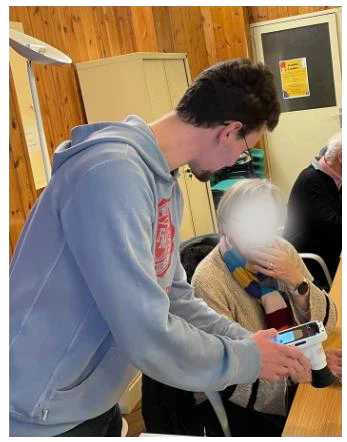
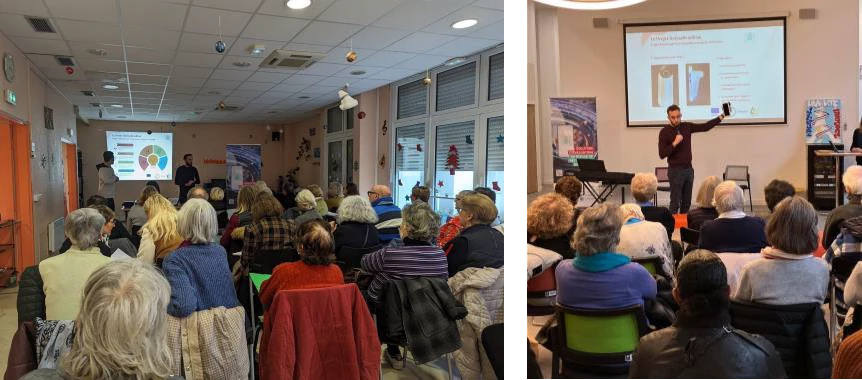
In summary, feedback from senior has been largely positive, highlighting ease of use, rapid results and the importance of making the device accessible to all. However, questions remain as to its reliability and widespread availability, underlining the need for further development and implementation of this innovative tool. E-Seniors can forward this feedback to the other project partners in order to validate the accessibility of such a device.
To stay in touch with the RetinaReadRisk project
Please subscribe to the newsletter.
You can contact us at this email
This project (reference 230123) is supported by EIT Health, a knowledge and innovation community of the European Institute of Innovation and Technology (EIT).

The Consortium of Retina Read Risk project
RetinaReadRisk
RetinaReadRisk is the spin-off created within the framework of the European project Retina Read Risk, and founded by Institut d’Investigació Sanitària Pere Virgili (IISPV), GENESIS Biomed, UP2Smart and Grupo TRC in February 2023, it aims to bring a solution to facilitate screening of diabetic retinopathy. The creation of the company emerged from a project supported by EIT Health, an aspect that also gives it an international projection. The new spin-off RetinaReadRisk benefits from more than 10 years of work from researchers and hopes to attract private and public funding in the next 2-3 years to be able to finalize the development of the product and commercialize the solution developed during Retina Read Risk project.
For more information visit: https://retinareadrisk.eu/
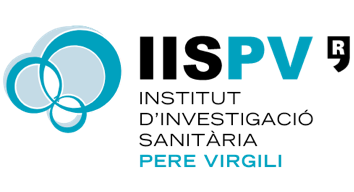
Institut d’Investigació Sanitària Pere Virgili (IISPV)
The IISPV is a biomedical research institute placed in the province of Tarragona (Catalonia, Spain) that combines clinical and basic research in order to accelerate the translation of knowledge to the benefit of patients. Founded in 2005, the institute integrates the Hospital Universitari de Tarragona Joan XIII, the Hospital de Tortosa Verge de la Cinta, the Hospital Universitari Sant Joan de Reus, the Hospital Universitari Institut Pere Mata and the Universitat Rovira i Virgili, in order to bring together and manage biomedical research and innovation in the territory. The IISPV aims to be a national and international reference centre in biomedical research and translation, at the service of the population, linking the health centres to the community.
For more information visit: https://www.iispv.cat/en/
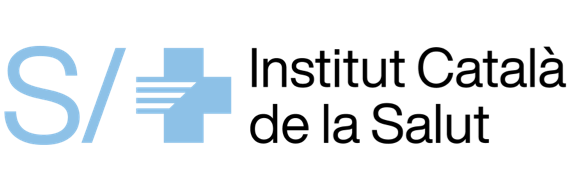
Institut Català de la Salut (ICS)
The Catalan Institute of Health (ICS) is the largest public health services company of Catalonia with a staff of over 53,031 professionals, that provides health care to nearly six million people across the country. As a reference entity of the public health system, the aim of ICS is to improve people’s health and quality of live, through the provision of innovative and excellent health services, regarding both the promotion of health and the treatment of diseases, from the most prevalent to the most complex ones. ICS structure includes 953 primary care centres and local consultancy, 8 Hospitals and 7 research institutes, including IISPV as a one of them. Our organization mission states to be a model that, through its structure and participants, responds to projects of strategic relevance to the ICS, guaranteeing the capacity and sufficient knowledge to execute them in short terms and obtaining fast returns in the form of results and value for the organization. ICS’ vision would become a reference and reliable model for all management structures, corporate and territorial, and ICS professionals to promote innovative projects, advise on their approach and relate, if necessary, external agents that collaborate in its deployment and / or provide resources. Since mid-2021 till mid-November 2023, Mr Francesc Iglesias, responsible of the Research and Innovation support office of ICS, has been the chairman of the Governing Board of EIT Health Spain, being actually the vicechair of the EIT Health Spain foundation and Chair of INNOLIFE.
For more information visit: http://ics.gencat.cat/es/inici/index.htm
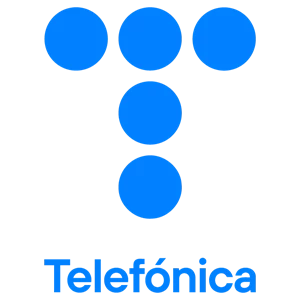
Telefónica
Telefónica is one of the world leaders integrated operator in the telecommunication sector, providing communication, digital services, information and entertainment solutions, with operations in 12 countries in Europe and Latin American and with a global present in 38 countries. As of the end of 2022, Telefónica’s total number of customers amounted more than 383 million and 103,000 professionals. Telefónica spends more 3.700 million euros each year on technological innovation, including more than 714 million euros on R&D of new products, services and management systems and improvement of existing ones. In the health sector, Telefonica is working in several areas like Telemedicine, geo-localised transport of living tissue between hospitals, assisted surgery operations with 5G and VR, AI applied to disease detection, etc.
For more information visit: https://www.telefonica.com/en/
Grupo TRC
Grupo TRC has over 30 years of experience working hand in hand with groups of hospitals, developing applications to optimize and integrate all activities and processes of a health center in a unified platform.
The experience in the integration of advanced telecommunications systems, in the deployment of voice operator and connectivity services and in the development of customized software, both public and private sectors, national and international, are the guarantee of the commitment to the quality of our deployments, solutions and services.
For more information visit: https://www.grupotrc.com/
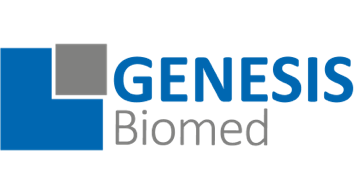
GENESIS Biomed
GENESIS Biomed is a consultancy firm in the biomedical healthcare sector specialized in providing consulting services in the genesis and first phases of lifecycle of biomedical spin-off and start-up companies, entrepreneurs, and research centers.
Based in its expertise GENESIS Biomed helps entrepreneurs and researchers to shape their business plan and supports them in the private fundraising process. GENESIS Biomed has raised >68,5 M€ in the last years in 20 rounds.
GENESIS Biomed expertise domains are biopharmaceutical, biotechnological, medical devices, in vitro diagnostic, nutraceutical and cosmetic. With more than 20 years of expertise in the healthcare sector, GENESIS Biomed is born in May 2017, and it is located in the Barcelona Science Park, and also with company sites in Madrid center and at La Marina in Valencia.
For more information visit: https://genesis-biomed.com/
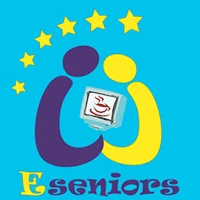
E-Seniors
E-Seniors is a French non-profit association, founded in 2004 by Monique EPSTEIN. E-Seniors aims at fighting against e-exclusion by providing access to and training in ICT to seniors and/or disabled people. Its main objectives are bridging and shrinking the digital gap between generations, caring for elders by fighting against senior isolation, and opening new horizons for efficient use of free time. Besides teaching “basic computer skills”, E-Seniors has opened more thematically oriented workshops for “advanced” students, dealing with, for example, digital images and sounds, interactive messaging and chat, “writing memories”, and meetings dealing with the fight against e-exclusion. Through its work for elderly people and with them, the association tries as well to enhance awareness of the importance of ICT solutions in everyday life.
For more information visit: https://www.e-seniors.asso.fr/en_main.htm
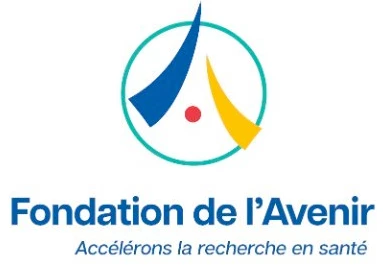
Fondation de l’Avenir
The Fondation de l’Avenir aims to support and promote applied medical research for the benefit of patients. Created in 1987 by the Mutualité, it has been recognized as a public utility since 1988. Today, the Foundation is the link between the mutualist movement and public health actors. The Fondation de l’Avenir can count on more than 43,000 donors and 40 partners from the social and solidarity economy, all of whom are mobilized to advance medical progress. The Foundation has financed more than 1,300 projects since its creation, including many world firsts. It is managed by an Executive Board, chaired by Marion LELOUVIER, under the control of a Supervisory Board, chaired by Matthias SAVIGNAC.
For more information visit: https://www.fondationdelavenir.org/
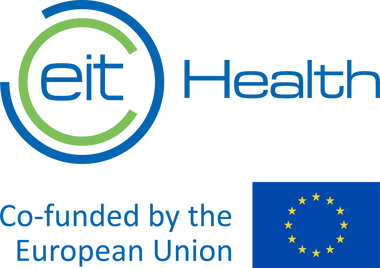
EIT Health
EIT Health is a network of best-in-class health innovators with approximately 130 partners and is supported by the European Institute of Innovation and Technology (EIT), a body of the European Union. We collaborate across borders to deliver new solutions that can enable European citizens to live longer, healthier lives.
As Europeans tackle the challenge of increasing chronic diseases and multi-morbidity, and seek to realise the opportunities that technology offers to move beyond conventional approaches to treatment, prevention and healthy lifestyles, we need thought leaders, innovators and efficient ways to bring innovative healthcare solutions to market. EIT Health addresses these needs. We connect all relevant healthcare players across European borders – making sure to include all sides of the “knowledge triangle”, so that innovation can happen at the intersection of research, education and business for the benefit of citizens.
EIT Health: Together for healthy lives in Europe.
For more information visit: www.eithealth.eu.
Disclaimer The Retina Read Risk project is funded by the European Union. Views and opinions expressed are however those of the author(s) only and do not necessarily reflect those of the European Union or the EIT. Neither the European Union nor the granting authority can be held responsible for them